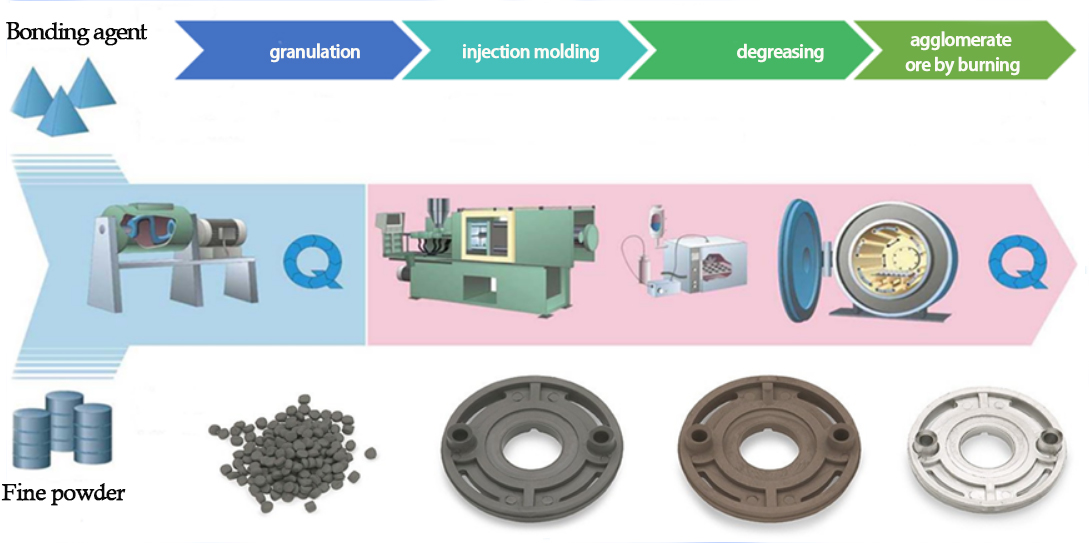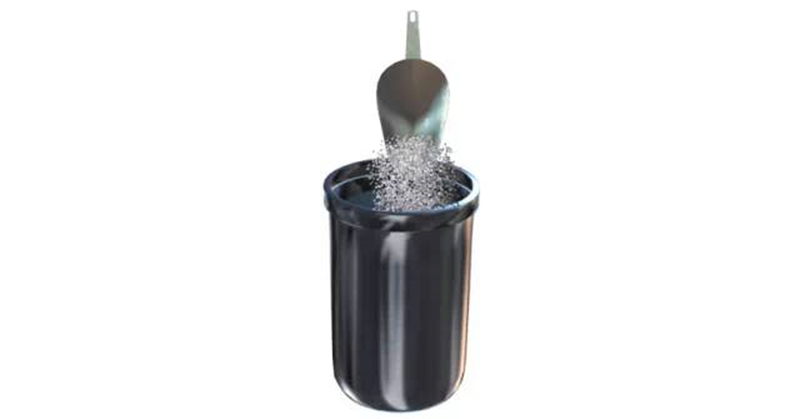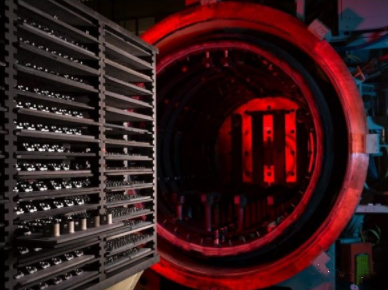The MIM process is divided into four main stages, including granulation, injection, degreasing and sintering, which can be followed by machining or secondary processes such as drawing and plating if required.

Pelletized fine metal powder is mixed with paraffinic binder and thermoplastic in precise proportions. The mixing process takes place in a specialized mixing equipment heated to a certain temperature to melt the binder. In most cases the mixing is carried out mechanically until the metal powder particles are uniformly coated with the binder and cooled to form granules (called feedstock) which can be injected into the mold cavities.

2, injection granular raw materials are fed into the machine heated and injected under high pressure into the mold cavity, through the injection molding to get the blank (green part), the process is very similar to plastic injection molding. Molds can be designed for multi-cavity to improve productivity, mold cavity size design to take into account the sintering process of metal parts produced by the shrinkage.

3 、Skimming
Degreasing is the process of removing the binder from the raw embryo, and after degreasing, brown part is obtained. This process is usually completed in several steps, the vast majority of the binder is removed before sintering, the residual part can support the part into the sintering furnace.
Degreasing can be accomplished by a variety of methods, the most common being solvent extraction. The degreased part is semi-permeable and the residual binder is easily evaporated during sintering.

4. Sintering
The degreased brown billets are placed in a high-temperature, high-pressure controlled furnace. The brown billets are slowly heated under the protection of gas to remove the residual binder. Once the binder has been completely removed, the billet is heated to such a high temperature that the voids between the particles disappear due to the fusion of the particles. The brown billet shrinks directionally to its designed size and transforms into a dense solid to obtain the final product.
During the sintering process, the brown billet undergoes an overall dimensional shrinkage of about 20%.





 ipcode:
ipcode: